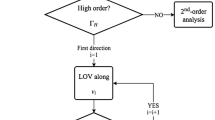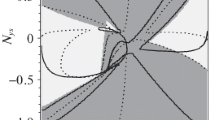Abstract
Most asteroid discoveries consist of a few astrometric observations over a short time span, and in many cases the amount of information is too limited to compute a full orbit according to the least squares principle. We investigate whether such a Very Short Arc may nonetheless contain significant orbit information, with predictive value, e.g., allowing to compute useful ephemerides with a well defined uncertainty for some time in the future.For short enough arcs, all the significant information is contained in an attributable, consisting of two angles and two angular velocities for a given time; an apparent magnitude is also often available. In this case, no information on the geocentric range r and range-raterdot is available from the observations themselves. However, the values of (r, rdot ) are constrained to a compact subset, the admissible region , if we can assume that the discovered object belongs to the Solar System, is not a satellite of the Earth and is not a shooting star (very small and very close). We give a full algebraic description of the admissible region, including geometric properties like the presence of either one or two connected components.The admissible region can be sampled by selecting a finite number of points in the (r, rdot ) plane, each corresponding to a full set of six initial conditions (given the four component attributable) for the asteroid orbit. Because the admissible region is a region in the plane, it can be described by a triangulation with the selected points as nodes. We show that triangulations with optimal properties, such as theDelaunay triangulations , can be generated by an effective algorithm; however, the optimal triangulation depends upon the choice of a metric in the (r,rdot ) plane.Each node of the triangulation is a Virtual Asteroid, for which it is possible to propagate the orbit and predict ephemerides. Thus for each time there is an image triangulation on the celestial sphere, and it can be used in a way similar to the use of the nominal ephemerides (with their confidence regions) in the classical case of a full least square orbit.
Similar content being viewed by others
References
Bern, M. and Eppstein, D.: 1992, ‘Mesh Generation and Optimal Triangulation’, In: D. -Z. Du and F. K. Hwang (eds), Computing in Euclidean Geometry, World Scientific, pp. 23–90.
E. Bowell B. Hapke D. Domingue K. Lumme J. Peltoniemi A.W. Harris (1989) ‘Application of photometric models to asteroids’ R.P. Binzel T. Gehrels M.S. Matthews (Eds) Asteroids II University of Arizona Press Tucson 524–556
J. M. A. Danby (1989) Fundam. Celestial Mech. Willmann-Bell Richmond
Delaunay, B.: 1934, ‘Sur la sphere vide’, Izv. Akad. Nauk SSSR, Otdel. Mat. Estestv. Nauk 7, 793–800.
de’ Michieli Vitturi, M.: 2004, ‘Approximate gradient-based methods for optimum shape design in aerodynamic’, Ph.D. Thesis, University of Pisa.
D. A. Field (1988) ArticleTitle‘Laplacian smooting and Delaunay triangulations’ Communications Applied Methods 4 709–712 Occurrence Handle10.1002/cnm.1630040603
Gauss, C. F.: 1809, ‘Theory of the Motion of the Heavenly Bodies Moving about the Sun in Conic Sections’, reprinted by Dover publications, 1963.
A. Milani M. E. Sansaturio S. R. Chesley (2001) ArticleTitle‘The Asteroid Identification Problem IV: Attributions’ Icarus 151 150–159 Occurrence Handle10.1006/icar.2001.6594
J. J. Risler (1991) ‘Méthodes mathematiques pour le CAO Collection Recherche en mathematiques appliquées’ RMA 18 Masson
J. Virtanen K. Muinonen E. Bowell (2001) ArticleTitle‘Statistical Ranging of Asteroid Orbits’ Icarus 154 412–431 Occurrence Handle10.1006/icar.2001.6592
Winslow, A. M.: 1964, ‘An irregular triangle mesh generator’ Report UCXRL-7880, National Technical Information Service, Springfield, VA.
Author information
Authors and Affiliations
Corresponding author
Rights and permissions
About this article
Cite this article
Milani, A., Gronchi, G.F., Vitturi, M.D.M. et al. Orbit determination with very short arcs. I admissible regions. Celestial Mech Dyn Astr 90, 57–85 (2004). https://doi.org/10.1007/s10569-004-6593-5
Received:
Revised:
Accepted:
Issue Date:
DOI: https://doi.org/10.1007/s10569-004-6593-5




